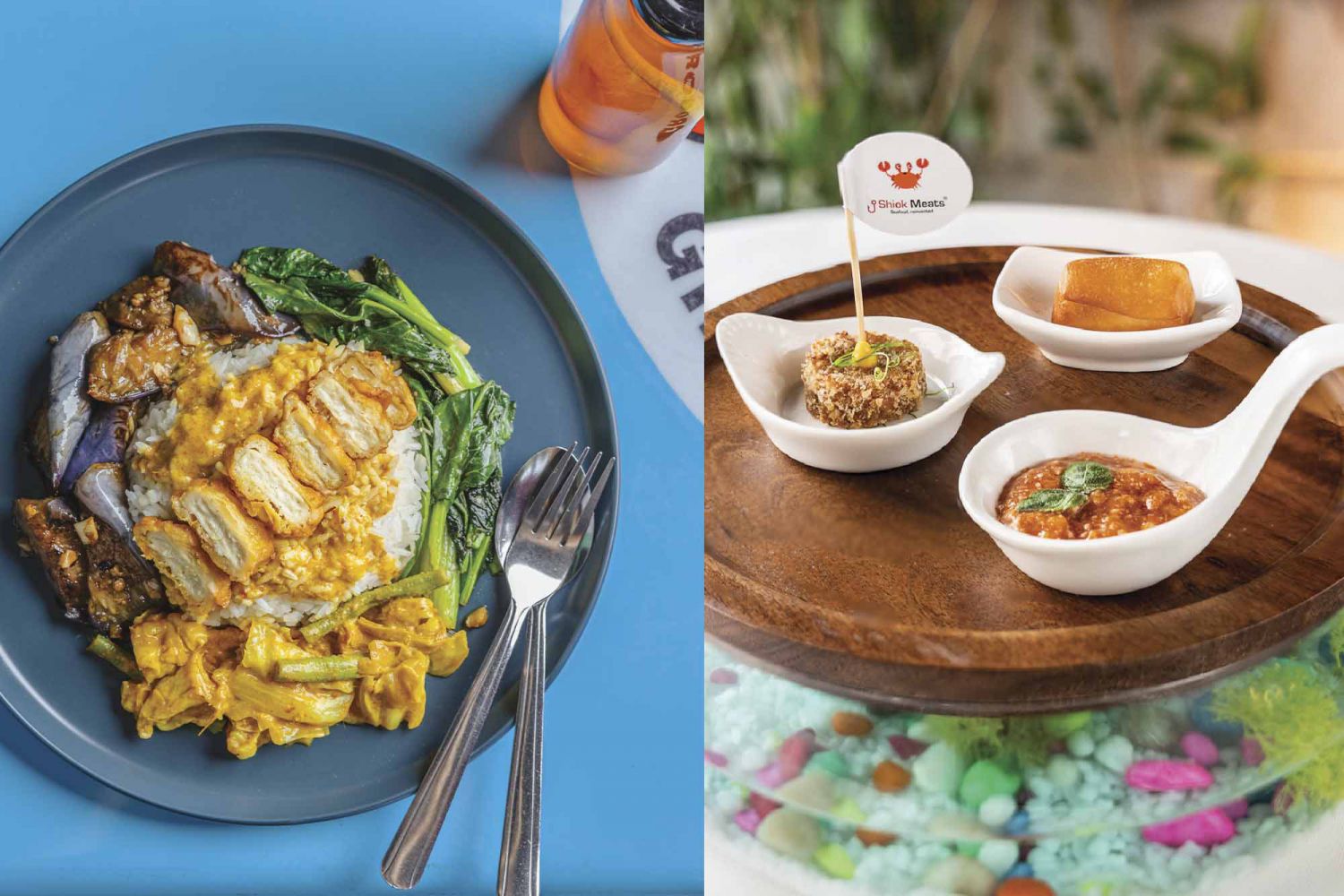Would you eat cultivated meats grown in a lab from animal cells? Tatler explores whether they are really more sustainable and if they will find a permanent place on Asia’s chicest dining tables
Additional reporting by Rachel Duffell.
As a food writer, I’ve tried just about everything that can be served on a dining table (and some things that perhaps shouldn’t be). But the idea of eating cultivated meat—also known as cell‑based, cultured or lab‑grown meat, which is meat made from animal cells rather than the meat of slaughtered livestock—still gave me pause. Is it safe? Is it healthy? And is it really more sustainable than the real thing?
In December 2020, the Singapore Food Agency approved the sale of cultivated meat in Singapore, the first government body in the world to do so. The approval was for cultivated chicken meat developed by American food tech company Eat Just’s Good Meat subsidiary, and the product—billed as the future of food and presented in bite‑sized nugget form—debuted at private members club 1880. Later, dishes using Good Meat cultivated chicken meat were featured in Cantonese restaurant Madame Fan’s delivery menu.
Despite my initial hesitation, I threw caution to the wind and sampled Madame Fan’s chicken and rice—breaded Good Meat chicken cutlets set atop fragrant jasmine rice, served with heritage carrots, micro shiso and edible flowers. The perfectly seasoned cultivated chicken meat tasted just like “natural” chicken breast, with a noticeably smoother, more tender texture.
Seventeen months on, Good Meat chicken remains the only cultivated meat currently commercially available here. But more food tech companies are following suit and developing their own cultivated meat products, aiming to ease the food demands of a rapidly growing population and develop a more sustainable way of producing meat that is better for the planet.

Finding Alternatives
The United Nations’ Food and Agriculture Organization has forecast that the current 7.9 billion global population will surpass 9 billion by 2050. This means that food production needs to ramp up, something that is proving to be a challenge with 27 per cent of earth (an area as big as North and South America combined) already used for livestock farming. The oceans aren’t doing any better: the Census of Marine Life 2010 statistics revealed that 90 per cent of large fish, including the ones we love to eat, such as Atlantic salmon, Atlantic cod, tuna and halibut, have already disappeared from our waters.
The rate at which humans are eating meat and seafood is not sustainable. But expecting everyone to eschew animal products entirely is unrealistic. One solution comes in the form of resource‑efficient alternative proteins, including plant‑based products designed to mimic meat and cultivated meats developed from animal cells. These have already drawn an interest that is only growing. Investment in the alternative proteins market grew 60 per cent from 2020 to 2021 globally, according to data analysis by the Good Food Institute (GFI), Asia’s leading alternative proteins think tank, with year‑on‑year growth in Asia Pacific jumping from US$162 million in 2020 to US$312 million in 2021, an increase of 92 per cent. Within the alternative proteins market in Asia Pacific, cultivated meats in particular have been gaining ground recently.
“Cultivated meat is vastly more efficient, requiring significantly less land, water and other inputs than what is typically required to raise livestock,” says Mirte Gosker, acting managing director of GFI. “It eliminates the inherent inefficiency of feeding crops and resources to animals to get only a tiny fraction of those resources back in the form of animal meat. The key to sustainable protein production is to divorce making meat from industrial animal agriculture.”
Don't miss: You Can Now Try Eat Just’s Good Meat at Our Local Hawker Stalls







